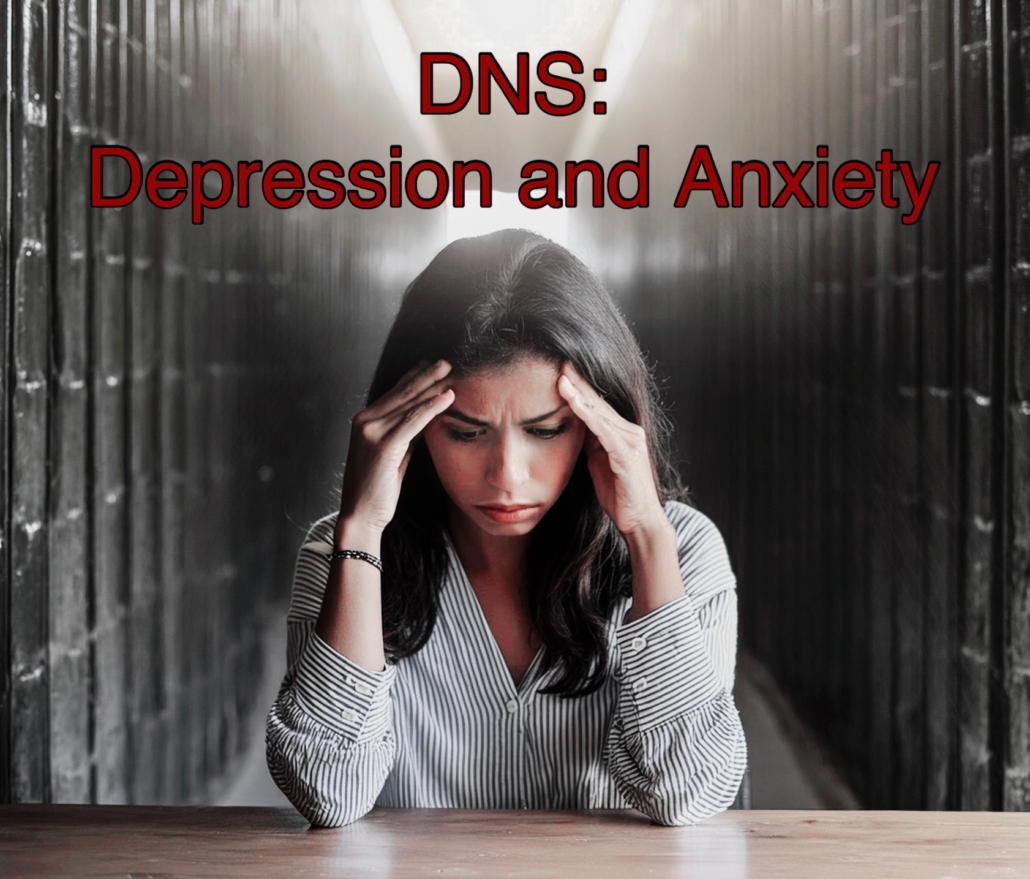Anxiety Following CO Poisoning Can Disable
Anxiety Following CO Poisoning disrupts not only the mood of the poisoned person but can disrupt cognitive processes, social integration and neurological function.
By Rebecca Martin
We often speak of the symptoms of carbon monoxide exposure and the damage it causes in the brain and body, days, weeks or months after the exposure has occurred. Those symptoms can include a change in breathing, fatigue, depression, memory loss, sleep disturbances, headaches, and anxiety. These symptoms make up the components of Delayed Neurological Syndrome or DNS, which typically presents 2-40 days following damage due to exposure of high levels of carbon monoxide or prolonged exposure over a course of time. In more severe outcomes the victim can experience Parkinson’s or Dementia-like symptoms affecting continence, movement, communication, and mood.

Anxiety after CO poisoning is only one of the myriad of emotional, mood and behavior issues which can contemplate recovery from carbon monoxide poisoning.
Although these symptoms are the outcome of brain damage acquired through exposure to carbon monoxide, in many instances these issues are misdiagnosed or treated as mental health issues. This type of acquired brain damage can have long-term, life-changing implications which can impact the survivors of carbon monoxide poisoning in cataclysmic ways. That impact can include anxiety following CO exposure.
Imagine hemoglobin as a circle divided into quarters. Each quarter is capable of collecting one molecule of oxygen for a total of four oxygen molecules which are then carried to various organs in the body. Carbon monoxide can travel and bind to the quarters up to 240 times faster than an oxygen molecule. In severe concentrations of carbon monoxide all four slots meant for oxygen may be bound to carbon monoxide. However, even in milder concentrations, one carbon monoxide molecule will bind to the hemoglobin and block oxygen molecules from binding to the remaining three slots. The hemoglobin travels through the bloodstream without delivering oxygen to the organs. As an additional complication, the hemoglobin returns to its oxygen source and is unable to bind oxygen even though the presence of carbon monoxide may have dissipated. The hemoglobin has now become carboxyhemoglobin (COHb) with a greatly diminished capacity to carry oxygen to the organs in the body, including the brain.
Because carbon monoxide binds to cells–replacing oxygen–it travels throughout the body impacting organs, including the brain. While some can recover from carbon monoxide exposure and the damage which occurs, many experience a myriad of permanent conditions, which, over time, can combine to produce additional problems. These deficits can impact social functioning and the ability to succeed at the tasks of earning a living or carrying out the tasks of daily living. When the basic components which make up daily lives are impacted, additional psychological problems can result, compounded by deficits incurred during carbon monoxide exposure.
The victim who experiences these deficits without proper medical identification, diagnosis, and treatment, may put in a great effort to overcome deficits on their own until the problems compound and overall functioning is entirely compromised.
Julie Connolly is a Senior Lecturer at Liverpool John Moores University, researching the experiences of people affected in this way. She said: “People’s stories can be heart-breaking. They have developed brain injuries which will be with them for the rest of their lives. But also they have, in some cases, lived with symptoms for some years, been disbelieved or treated for mental health issues, when the cause of their symptoms was carbon monoxide exposure.” https://www.headway.org.uk/news-and-campaigns/campaigns/carbon-monoxide-a-danger-to-your-brain/
Julie Connolly recounts the stories of victims who eventually were unable to continue to run their own businesses or return to former social activities. These life-changing deficits can then snowball into more sleep disturbances, deeper depression, heightened anxiety, and other psychological issues which batter the self-image of those impacted initially by an acquired brain injury due to carbon monoxide exposure.
Depression and anxiety impact a high percentage of people who have experienced poisoning due to carbon monoxide regardless of other sequelae. In one clinical study the incidence of depression and anxiety continued from 6 weeks, 6 months and 12 months following exposure.
Depression and anxiety were present in 45% of patients at 6 weeks, 44% at 6 months, and 43% at 12 months. https://pubmed.ncbi.nlm.nih.gov/15970733/
Depression and anxiety both have biological causality in the brain and the potential to escalate in intensity over time. Depression and anxiety are key components in suicidal ideation as well.
The presence of depression indicates that there has been a disruption in the brain chemistry. The presence of anxiety indicates a malfunction in the amygdala which is responsible for how we react to the information we receive. A malfunction in the amygdala may cause panic to override logic, basically triggering a fight or flight response to stimuli.
Anxiety and depression can follow acquired brain injury (ABI) as a result of biological, psychological, and social factors that are altered by the ABI. Individuals are not only faced with coming to terms with the traumatic event, but also the biological and psychological changes and multiple losses associated with the ABI. Anxiety and depression both have an effect on cognition, mood and motivation, which may hamper rehabilitation (Khan-Bourne & Brown, 2003). https://www.researchgate.net/profile/Brian-Waldron/publication/232809962_Cognitive_Behavioural_Therapy_for_Depression_and_Anxiety_in_Adults_with_Acquired_Brain_Injury_What_works_for_whom/links/56b0ff3108ae5ec4ed484a0d/Cognitive-Behavioural-Therapy-for-Depression-and-Anxiety-in-Adults-with-Acquired-Brain-Injury-What-works-for-whom.pdf?origin=journalDetail&_tp=eyJwYWdlIjoiam91cm5hbERldGFpbCJ9
The depression and anxiety which can result from traumatic brain injury (TBI) and acquired brain injury (ABI) are distinctly different than “normal” depression and anxiety as they can be resistant to traditional methods of treatment. Because brain injuries impact the entire brain, disruptions to individual functions can become heightened triggering abnormal responses not usually associated with depression and anxiety. And because we are seeing multiple issues arising after brain damage, these may act together in very complicated ways which cannot be addressed by the traditional pharmacology used to address the psychiatric components. Sleep disorders, fatigue, memory loss and other initial sequelae of acquired brain injury due to carbon monoxide poisoning can interact with depression and anxiety to create biological, psychological, and social disturbances not typically encountered when specific imbalances are present alone.
Regular major depression may feel like, “I don’t care about anything, I’m useless, what’s the point?” But people with TBI-associated depression, you often see them repeatedly engaging in things that, normally, people would learn and be frustrated from and give up on. For example, they can become impulsive and start getting angry and become easily frustrated by seemingly small things because they’re not learning from the frustration. https://www.statnews.com/2023/07/06/depression-after-traumatic-brain-injury/
Not everyone who is exposed to carbon monoxide poisoning experiences these changes in emotional functioning. But, as new studies indicate, a very high percentage are reporting depression and anxiety which persists, without diminishing significantly, over a long period of time. And in some instances, these changes can persist over a lifetime.
Because of the unique presentation of depression and anxiety in acquired and traumatic brain injury, these malfunctions can evolve into other disorders.
Individuals are not only faced with coming to terms with the traumatic event, but also the biological and psychological changes and multiple losses associated with the ABI. Anxiety and depression both have an effect on cognition, mood and motivation, which may hamper rehabilitation (Khan-Bourne & Brown, 2003). https://www.researchgate.net/profile/Brian-Waldron/publication/232809962_Cognitive_Behavioural_Therapy_for_Depression_and_Anxiety_in_Adults_with_Acquired_Brain_Injury_What_works_for_whom/links/56b0ff3108ae5ec4ed484a0d/Cognitive-Behavioural-Therapy-for-Depression-and-Anxiety-in-Adults-with-Acquired-Brain-Injury-What-works-for-whom.pdf?origin=journalDetail&_tp=eyJwYWdlIjoiam91cm5hbERldGFpbCJ9
With more advanced brain mapping and the increased ability to track individuals over time, we are gaining a new understanding of the biological components of mood and emotional disorders. Technology is allowing us to look deeper into the structures and functioning of the brain. In some ways, the medical field has struggled to keep up, understandable in an environment in which health is often measured by the phrase “they are walking, they are talking, my job is done.” But for those victims who may suffer devastating financial loss due to the loss of a job, or suffer a loss of quality of life due to social isolation, walking and talking may not be the prognosis they desire.

Thank you for this article. I have been following your blog since my family was affected by CO poisoning and you have been very helpful in helping me understand what has happened and what needs to happen for her recovery.